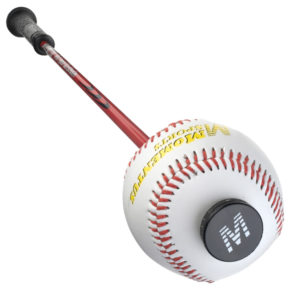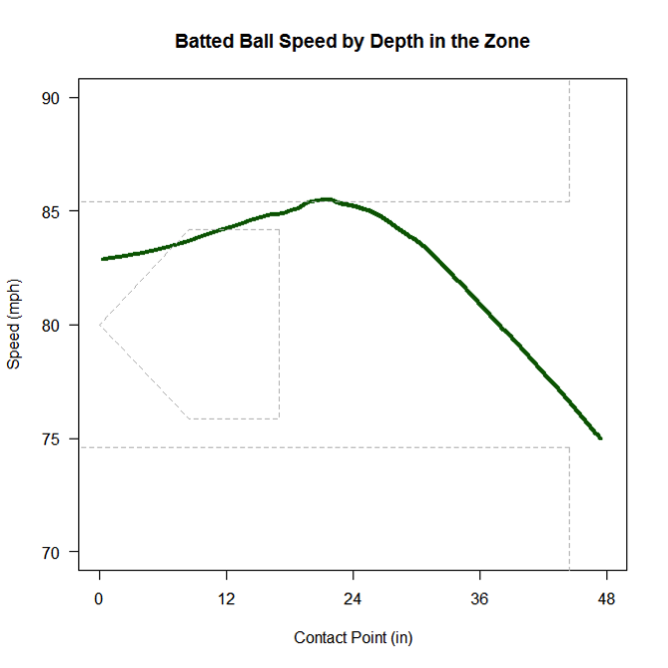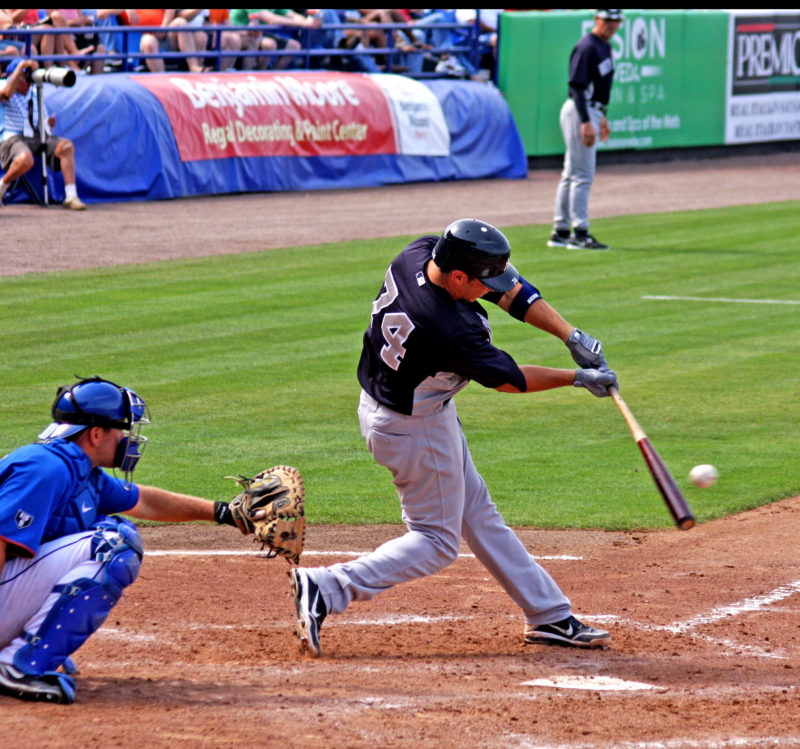
One of the most important fundamentals to teach Little League batters is the importance of hitting the ball in front of the plate with a short swing.
Unfortunately, this concept is one of the more difficult aspects of hitting for Little League players to understand.
(Some) Coaches get it but struggle simplifying the concept enough for youth players through verbal teaching and proper drills to successfully unwind these bad habits. – Because of this, it’s often avoided and skipped over during batting practices.
I was shopping at my local baseball shop for some lineup cards and saw the Momentus Sports “Swing Trainer” and decided it give it a try and see how effective it might work for my U11 Little League team.
In this article, I’ll review the pros and cons of the Swing Trainer and how to best implement this product into your batting practices.
Issues With Long Swings
The importance of training players to have short swings is fairly simply but important enough to get a basic refresh on the basics.
A long swing impacts to an at-bat:
- Bat barrel stays in contact area for minimal amount of time
- Slow hands and bat speed
- Flat out failure to make contact on good ball reads by the batter
- Less balls hit on the sweet spot of the bat (more foul balls, weak grounders and easily caught pop-ups)
- Creates other bad habits to make up for lack of bat speed
This is usually caused by:
- Failure of keeping hands inside till out front of body
- Arms and hands too far away from body before the swing begins
- Bat head dropping below the hands behind the plate
- Top hand rolling over too early
I’ll summarize with one graph showing batted ball speed by the contact point position in relation to home plate below.

Bat speed is fastest when the contact point is out front of the plate and will creating greater chances for reaching 1st base and beyond.
Anything hit behind the plate suffers slow speed and more chances of missing, weaker hits and more outs.
This is why training this concept is so important!
*Note – The graph is for MLB stats so generalize the inches in contact point in front of the plate for youth players as their bodies and reaches are obviously much smaller than adults.

Speed Hitter Overview
The Speed Hitter is remarkably simply.
It has a grip, a shaft with an end cap and a ball that slides up and down the shaft.
There’s two core fundamentals that Speed Hitter works to develop.
Hands Inside & Hitting the Ball Out Front
I use this training function exclusively with youth players.
Players swing the Speed Hitter as they normally would with a regular baseball bat and will make a “popping” noise when the ball reaches the top end resembling a close comparison to an actual batted ball.
The mechanics of the Speed Hitter are also straight forward.
If the “pop” of the ball impacting the end of the shaft happens in front of the plate then the swing most likely has solid fundamentals.
If your swing is long:
- Hands too far away from body early in the swing
- Bat head drops parallel or below hands early in the swing
- Not enough quick core rotation in swing
…The ball will slide down the shaft and make a popping noise before the bat head gets in front of the plate and most defiantly lacks solid fundamentals.
Batt Speed Training
You can also use the Speed Hitter to give an immediate feedback to the player about their bat speed.
The ball will remain in a stationary position at the end of the bat if you slide it up to the knob with your hands, which is what you want to do before each swing during this drill.
With the added top weight, a player can more easily feel the differences in his bat speed throughout their swing.
Anything other than hands inside will provide slower feedback to the batter where proper mechanics give a gratifying feeling of super sonic hand speed.
I haven’t used this method for youth player because the “feedback” can’t easily be seen or felt by anyone other than the batter themselves. It’s a solid function of the product but it’s probably best used by older players who have a solid understanding of swing mechanics.
Pros and Cons of Speed Hitter
The product has mostly pros and you’re able to throw more of your most valuable resource (time) to overcome the cons.
Pros:
- It’s very high quality all around. The grip, shaft and end piece are solid and the ball is similar to a real baseball’s feel.
- Comes with links to videos for educating the core important functions and drills.
- Players who have a basic understanding of hands inside / hit in front of plate get instant feedback on each swing.
- Batters can get TONS of reps in a short amount of time.
- Less inexperienced coaches can instantly identify bad mechanics with just a few swings.
- More experienced coaches can identify issues with with players who aren’t so obvious.
- Flat out, kids have fun swinging a ball on a stick that makes a cracking noise!
- Can be used beyond youth for Travel Teams, High School and beyond!
Cons:
- Coaches must convey a basic understanding before getting into drills.
- A knowledgeable coach must spend dedicated 1 on 1 time with each kid till the player has an understanding and can successfully swing the product repetitively. Some of my players only take a 1-2 minutes. Others can take 10+ minutes before they swing one time successfully!
- The drill must be supervised by an adult the entire session, even after the Coach feels the player has an understanding of the fundamentals.
- These aren’t dirt cheap so you’re most likely only going to have 1 Speed Hitter available so you have to make best use of it on practice days and make sure it’s always being swung in rotation.
- Kids like doing other things with this product! It’s often times used as a shovel and a sword!
- Best for kids 9+ years old. Any younger and their ability to comprehend the basics will have diminishing returns.
In summary, it works and works well in fine tuning players who already have decent mechanics and helps players with improper fundamentals feel their mistakes (and successes) at the expense of devoting dedicated upfront and during drill 1 on 1 time.
Implementing into Practice
My teams usually have one full day of batting practice a week and one for fielding.
On batting days, I’ve found the most success is to work this drill into a rotation with the players who need the most work with their hands first. This way, you’re better ensuring they move through the other drills with the possibility of them carrying over these mechanics into other stations.
Make sure their making some progress before you rotate them even if that means rotating everyone else besides them. We usually work though each station twice so all the other kids will get time if this is the case.
An adult needs to be present who has some understanding as stated before. He/She will usually be telling the player if that specific swing was successful or not (ball snapped on end out front) after each rep. If it didn’t then providing one core reason why it didn’t (bad head slumped, hands extended early). When necessary, take the Speed Hitter and show by demonstration how and where their hands need to be through the swing if a player is failing to have successful reps.
Most importantly is you need to be consistent with using the product weekly if you want to see improvements.
I highly recommend giving this product a try for youth players if you’re willing to devote the time to educating your players!